

Less is more for health and happiness
- …


Less is more for health and happiness
- …


What Is Thyroid Eye Disease?
TED stands for Thyroid Eye Disease, which is an autoimmune condition often associated with Graves' disease. It affects the tissues around the eyes, causing inflammation, swelling, and sometimes symptoms like bulging eyes, double vision, and discomfort. TED can significantly impact a person's quality of life, both physically and emotionally.
It's important to recognize TED early and manage it with a multidisciplinary approach, including endocrinologists and ophthalmologists. Achieving normal thyroid levels (euthyroidism) is a key part of treatment, and guidelines like those from EUGOGO help tailor care based on the severity and activity of the disease.
Symptoms
- Bulging eyes (proptosis)
- Eye irritation
- Swollen and inflamed eyelids (blepharitis)
- Dry eyes or teary eyes
- Frequent blinking
- Light sensitivity (photophobia)
- Eye pain and headaches
- Difficulty moving your eyes
- Double vision (diplopia)
Causes/Risk factors
- Autoimmune diseases
- Graves' diseases
- TSHR stimulating autoantibodies
- Abnormal thyroid hormone levels
- Radioiodine therapy
- Smoke
- Characteristics of high-risk thyroid eye disease patients
Managment
- Eye drops
- Selenium supplements
- Eyeglasses with prisms
- Thionamides
- Corticosteroids
- Teprotumumab
- Radiation therapy
- Clinical trials
Hello & Welcome
Add a subtitle here
Passion
Use a text section to describe your values, show more info, summarize a topic, or tell a story. Lorem ipsum dolor sit amet, consectetuer adipiscing elit, sed diam nonummy nibh euismod tincidunt ut laoreet dolore.
Independence
Use a text section to describe your values, show more info, summarize a topic, or tell a story. Lorem ipsum dolor sit amet, consectetuer adipiscing elit, sed diam nonummy nibh euismod tincidunt ut laoreet dolore.
Happiness
Use a text section to describe your values, show more info, summarize a topic, or tell a story. Lorem ipsum dolor sit amet, consectetuer adipiscing elit, sed diam nonummy nibh euismod tincidunt ut laoreet dolore.
Happiness
Use a text section to describe your values, show more info, summarize a topic, or tell a story. Lorem ipsum dolor sit amet, consectetuer adipiscing elit, sed diam nonummy nibh euismod tincidunt ut laoreet dolore.
FAQs
Add a subtitle here
What is the FAQ section?
What is Strikingly?
How do I create a website?
Thyroid eye disease is a complex inflammatory disorder
Thyroid Eye Disease (TED) is indeed a complex inflammatory disorder. It involves an autoimmune process where the body's immune system mistakenly targets tissues around the eyes. Research has shown that certain receptors, like the TSH receptor (TSHR) and the insulin-like growth factor-1 receptor (IGF-1R), are overexpressed on orbital fibroblasts in people with TED. Activation of these receptors leads to inflammation, tissue expansion, and changes such as swelling and bulging of the eyes.
This complex interaction of immune cells, antibodies, and receptors drives the characteristic symptoms of TED and makes its management challenging but also an exciting area for ongoing research and therapeutic advances.
FAQs
Add a subtitle here
What is the FAQ section?
What is Strikingly?
How do I create a website?
What Happens in My Eyes?
Let us understand our immune system first

Orbital fibroblasts
Human orbital fibroblasts are specialized cells found in the connective tissue of the orbit. They help maintain the structural integrity of the orbit, produce extracellular matrix components, and contribute to tissue repair and remodeling. They are also involved in various physiological and pathological processes, including inflammation and fibrosis.
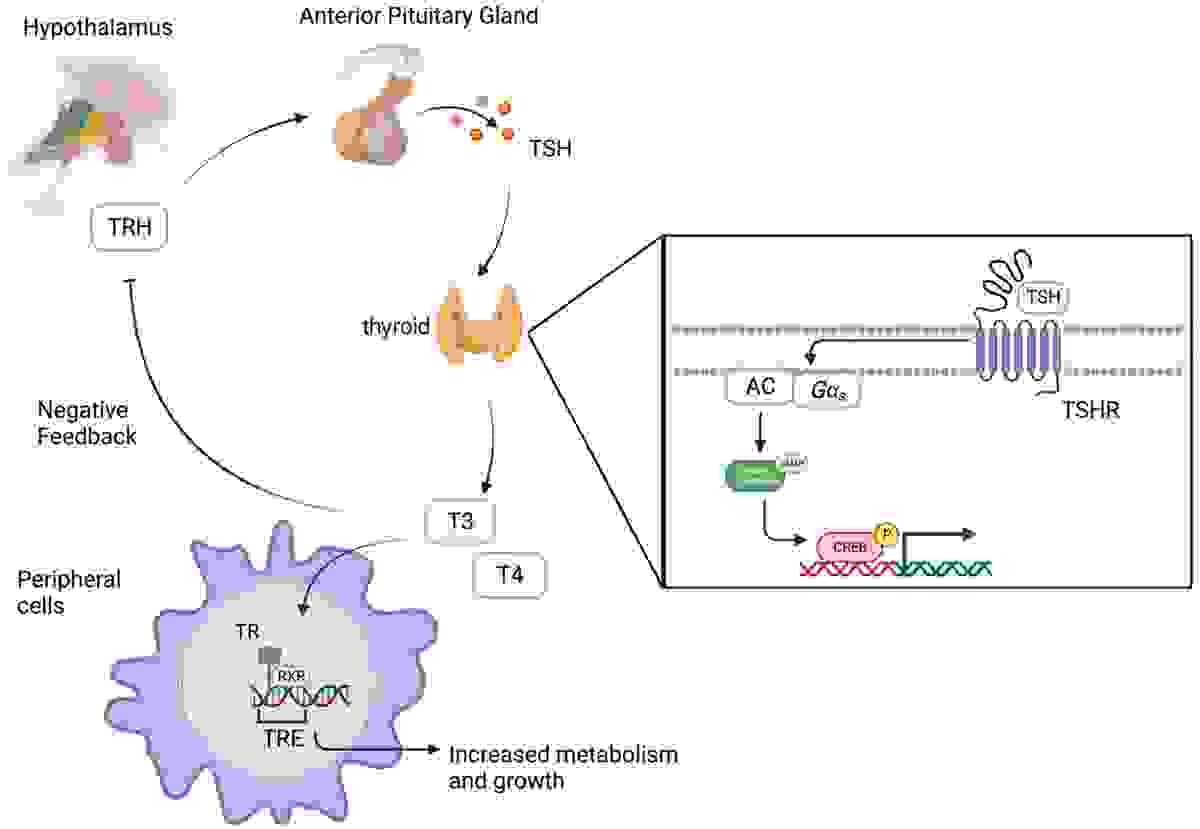
TSHR
The thyrotropin receptor (or TSH receptor) is a receptor (and associated protein) that responds to thyroid-stimulating hormone (TSH, also known as "thyrotropin") and stimulates the production of thyroxine (T4) and triiodothyronine (T3). The TSH receptor is a member of the G protein-coupled receptor superfamily of integral membrane proteins and is coupled to the Gs protein.
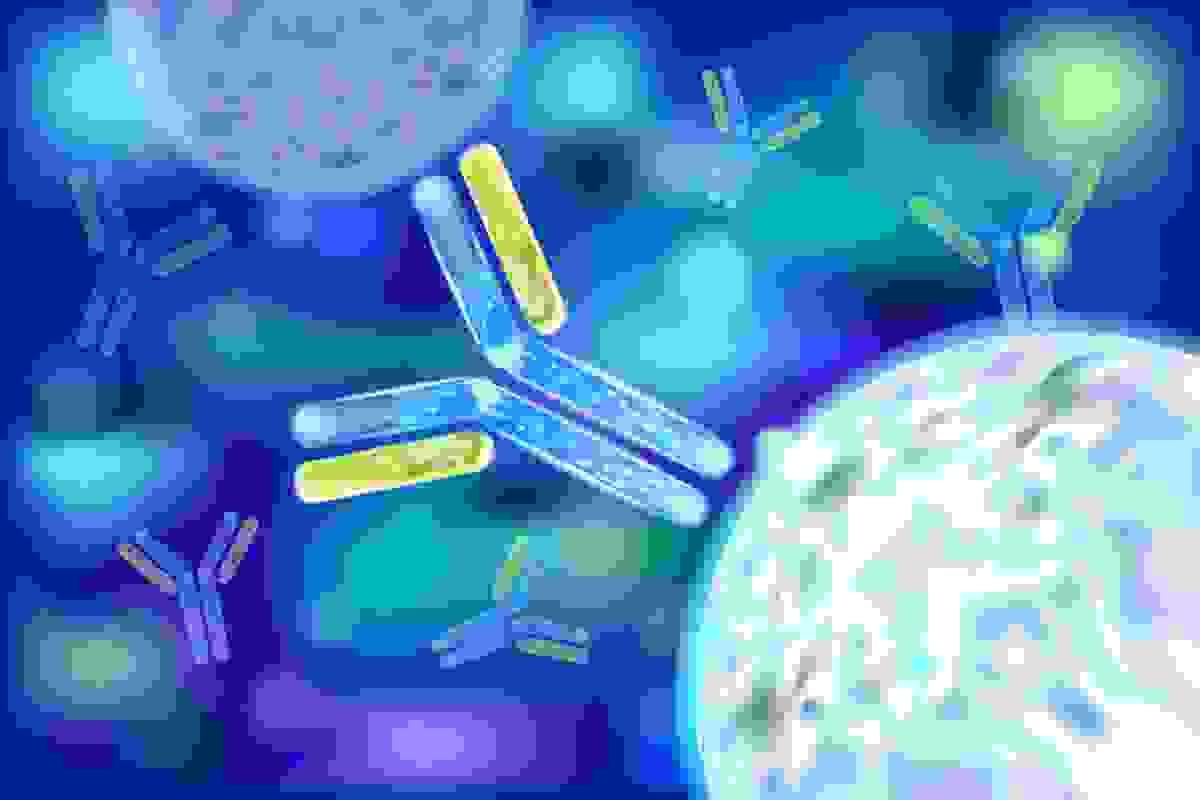
Autoantibodies
Autoantibodies are a malfunctioning type of antibody.
Antibodies are proteins your immune system makes to identify and destroy invaders like germs, allergens or toxins in your blood. When your immune system detects a new unwanted substance in your body, it makes antibodies customized to find and destroy that invader.
Autoantibodies harm your body instead of keeping it healthy. They mistakenly target healthy tissue, instead of protecting you from substances that can make you sick. This damage can eventually cause many types of autoimmune diseases.
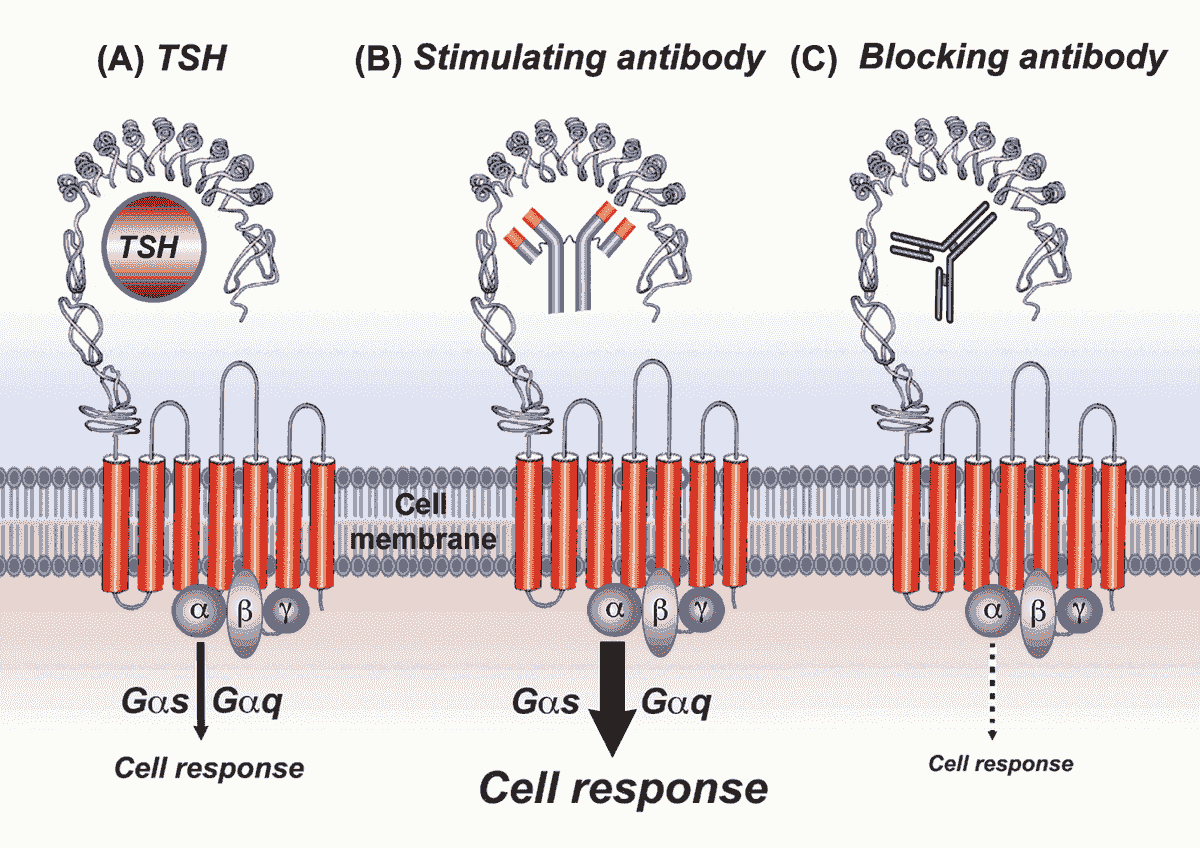
Thyroid-stimulating autoantibodies
Thyroid antibodies develop when a person’s immune system mistakenly attacks the thyroid cells and tissues. This leads to inflammation, tissue damage or disrupted thyroid function. These antibodies cause autoimmune thyroid disorders, such as Graves’ disease and Hashimoto’s thyroiditis.
If the initial thyroid test results show signs of a thyroid problem, and if there is a suspicion of autoimmune thyroid disease, one or more thyroid antibody tests may be ordered. Antibody tests are used to confirm the diagnosis of autoimmune thyroid diseases. Some people will test positive for more than one type of thyroid antibody.
In people with subclinical thyroid disease, the presence of antibodies can indicate the person may go on to develop full-blown thyroid disease in the future, but that treatment is not yet required. Positive antibodies can also be present in people without thyroid disease.
In Graves’ disease, the thyroid stimulating antibodies (TSAb) mimic the thyroid stimulating hormone (TSH) secreted by the pituitary gland. This causes the thyroid to continue to produce thyroid hormones, despite the pituitary trying to switch off the thyroid by stopping production of TSH. The presence of TRAb suggests a person has Graves’ disease. Approximately 95% of patients with Graves’ disease will have raised TRAb. The severity of Graves’ disease is often reflected in the levels of TRAb present. For example, where the TRAb levels are very high, the patient is less likely to achieve long-term remission following a course of treatment with antithyroid drugs.
It is sometimes possible for antibodies to be negative, but for a scan to confirm a Graves’ disease diagnosis.
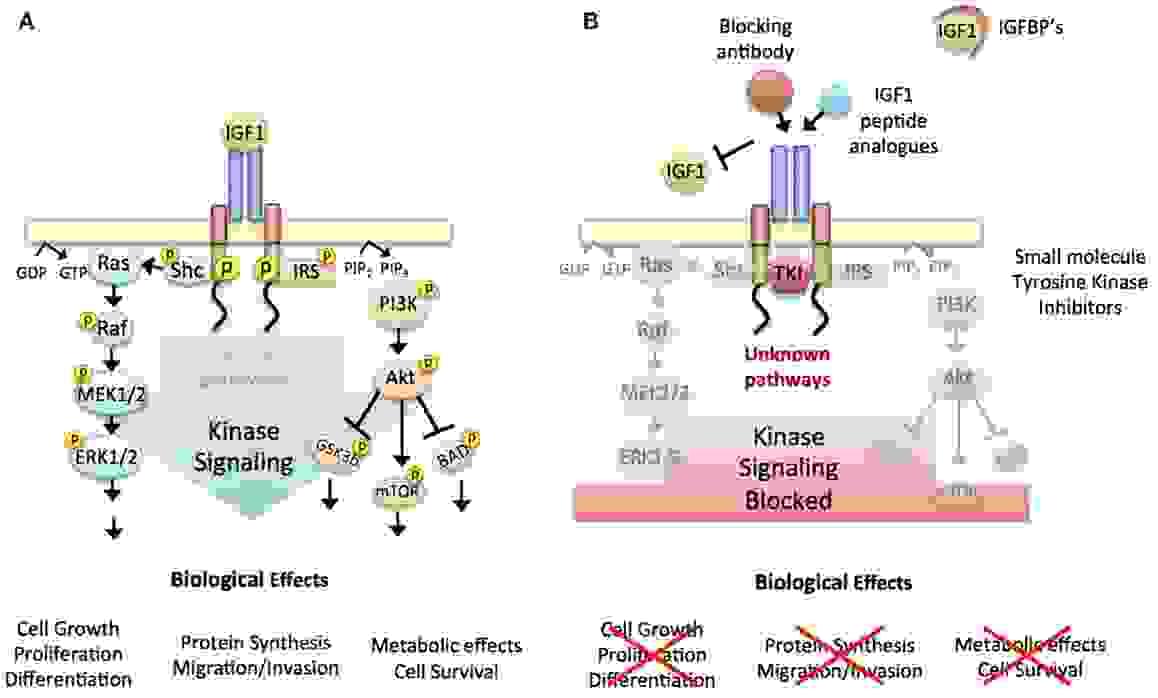
IGF-1R
The insulin-like growth factor 1 (IGF-1) receptor is a protein found on the surface of human cells. It is a transmembrane receptor that is activated by a hormone called insulin-like growth factor 1 (IGF-1) and by a related hormone called IGF-2. It belongs to the large class of tyrosine kinase receptors. This receptor mediates the effects of IGF-1, which is a polypeptide protein hormone similar in molecular structure to insulin. IGF-1 plays an important role in growth and continues to have anabolic effects in adults – meaning that it can induce hypertrophy of skeletal muscle and other target tissues.
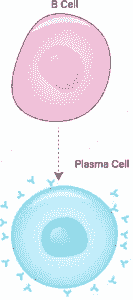
B cells
B cells are a type of white blood cell that makes infection-fighting proteins called antibodies. B cells are an important part of your immune system, your body’s defense against harmful pathogens (viruses, bacteria and parasites) that enter your body and make you sick.
B cells and T cells are a specific type of white blood cell called lymphocytes. Lymphocytes fight harmful invaders and abnormal cells, like cancer cells. T cells protect you by destroying pathogens and sending signals that help coordinate your immune system’s response to threats. B cells make antibodies in response to antigens (antibody generators). Antigens are markers that allow your immune system to identify substances in your body, including harmful ones like viruses and bacteria.
B cells are also called B lymphocytes.
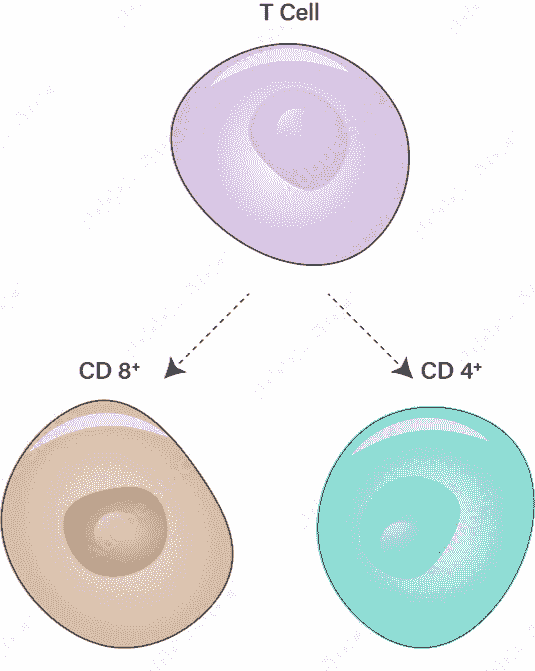
T cells
T cells are a type of white blood cell called lymphocytes. They’re also called T lymphocytes. Lymphocytes play an essential role in your immune system. Your immune system fights infection-causing pathogens (viruses, bacteria, fungi and parasites) and harmful cells, like cancer cells.
There are two main types of T cells:
Cytotoxic T cells: Cytotoxic T cells are also called CD8+ cells because they have a CD8 receptor on their membranes. These cells get their name from “cyto,” which means cell, and “toxic,” which means poisonous or harmful. Cytotoxic T cells kill cells infected with viruses and bacteria, and they also destroy tumor cells.
Helper T cells: Helper T cells are also called CD4+ cells because they have a CD4 receptor on their membranes. Unlike cytotoxic T cells, helper T cells don’t kill cells directly. Instead, they send signals that tell other cells in your immune system how to coordinate an attack against invaders. Helper T cells signal cytotoxic T cells, B cells and another type of white blood cell called a macrophage.
Although they’re not considered one of the main T cell types, regulatory T cells (suppressor cells) play an essential role in your immune system. These cells reduce the activity of other T cells when necessary. They can prevent T cells from attacking your body’s healthy cells.

MHC
The major histocompatibility complex (MHC) is a large locus on vertebrate DNA containing a set of closely linked polymorphic genes that code for cell surface proteins essential for the adaptive immune system. These cell surface proteins are called MHC molecules.
Its name comes from its discovery during the study of transplanted tissue compatibility. Later studies revealed that tissue rejection due to incompatibility is only a facet of the full function of MHC molecules, which is to bind an antigen derived from self-proteins, or from pathogens, and bring the antigen presentation to the cell surface for recognition by the appropriate T-cells. MHC molecules mediate the interactions of leukocytes, also called white blood cells (WBCs), with other leukocytes or with body cells. The MHC determines donor compatibility for organ transplant, as well as one's susceptibility to autoimmune diseases.

MHC II
MHC Class II molecules are a class of major histocompatibility complex (MHC) molecules normally found only on professional antigen-presenting cells such as dendritic cells, macrophages, some endothelial cells, thymic epithelial cells, and B cells. These cells are important in initiating immune responses.
MHC-II-expressing cells acquire antigen by distinct cellular processes that allow professional APCs to sample their external environment. Classically, extracellular proteins were thought to predominate as antigenic sources in MHC-II presentation, but many studies have demonstrated that the MHC-II peptidome largely consists of peptides derived from endogenous – rather than exogenous – source proteins.
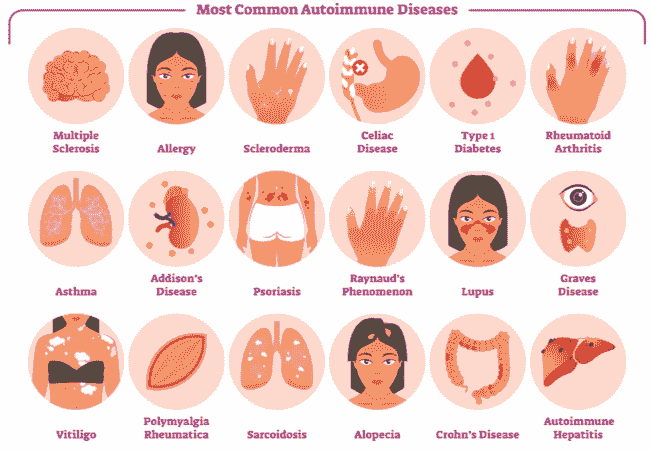
Autoimmune diseases
Autoimmune diseases are health conditions that happen when your immune system attacks your body instead of defending it. Healthcare providers sometimes call them autoimmune disorders.
Usually, your immune system is like your body’s built-in security system. It automatically detects substances that shouldn’t be in your body (like viruses, bacteria or toxins) and sends out white blood cells to eliminate them before they can damage your body or make your sick.
If you have an autoimmune disease, your immune system is more active than it should be. Because there aren’t invaders to attack, your immune system turns on your body and damages healthy tissue.
Autoimmune diseases are chronic conditions. This means if you have an autoimmune disease, you’ll probably have to manage it and the symptoms it causes for the rest of your life.
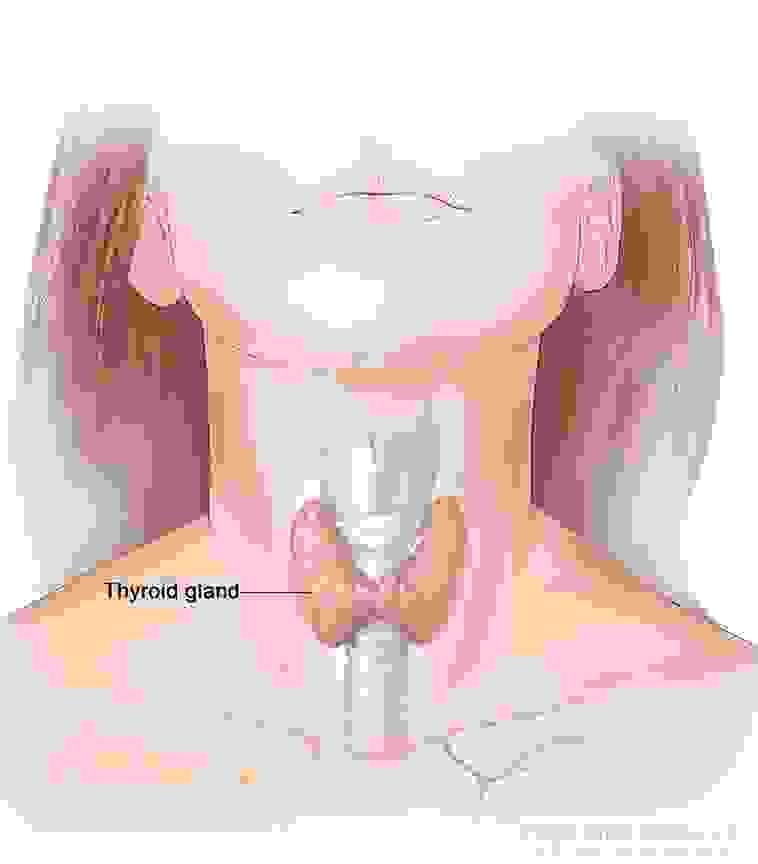
Graves Disease
Graves’ disease is a lifelong (chronic) autoimmune disease that causes your thyroid to make too much thyroid hormone. It happens because your body makes antibodies to your thyroid gland.
It’s one of the most common causes of hyperthyroidism (overactive thyroid), especially if you have a family history of thyroid problems. Graves’ disease mainly affects your thyroid. But it can also affect your eyes and skin.
Graves’ disease speeds up your metabolism. This can affect several aspects of your health. You may not feel like yourself or even feel out of control of your body. It’s important to get medical treatment if you develop signs of this condition.
Graves’ disease (GD) is an autoantibody-mediated autoimmune disease that is characterized clinically by hyperthyroidism and pathologically by infiltration of thyroid by T and B cells reactive to the thyroid-stimulating hormone receptor (TSHR), thyroid peroxidase (TPO), and thyroglobulin (Tg) in most patients. GD is caused by direct stimulation of thyroid epithelial cells by TSHR stimulating antibodies (TSAb), triggering signaling cascades within thyrocytes that lead to over-production and secretion of thyroid hormones resulting in clinical hyperthyroidism .
The A subunit of the extracellular domain of TSHR is the major autoantigen in GD, mediating the T- and B-cell immune responses that cause GD. The sequence of events leading to GD start when pathogenic TSHR peptides are presented by HLA class II on antigen presenting cells to CD4+ T-cells. CD4+ T-cells then recognize the HLA class II-TSHR peptide complex and initiate immune responses, including signals for B-cell proliferation and differentiation into plasma cells, which produce and secrete anti-TSHR stimulating antibodies.
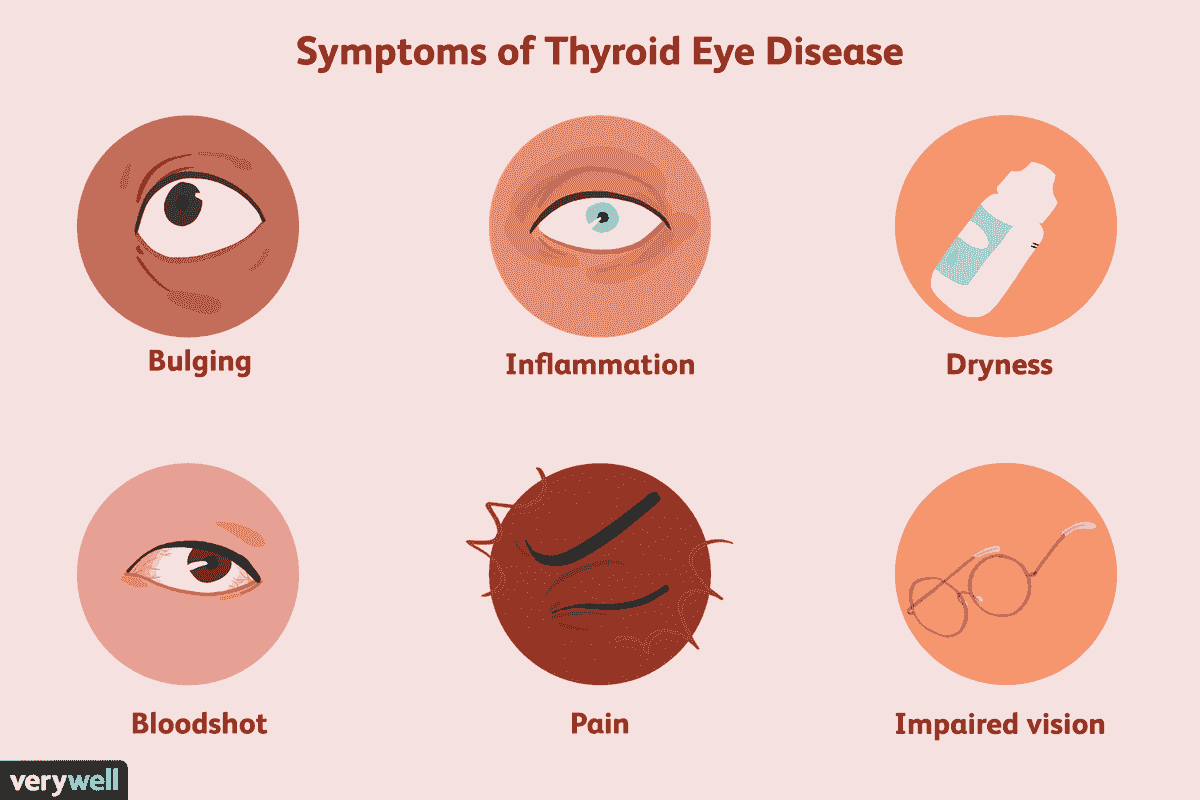
Thyroid eye disease (TED)
Graves’ disease (GD) is a common organ-specific autoimmune disease with an annual incidence of 20 to 50 cases per 100,000 persons. The primary symptoms are hyperthyroidism and goiter, with almost a half of GD patients reporting symptoms of Graves’ ophthalmopathy. Thyroid-stimulating hormone receptor (TSHR) is a major thyroid self-antigen, and autoantibodies against TSHR are widely believed to be the cause of hyperthyroidism. Autoantibodies that bind to specific epitopes on the TSHR mimic thyroid-stimulating hormone and induce the secretion of excessive amounts of thyroid hormone from thyroid cells.
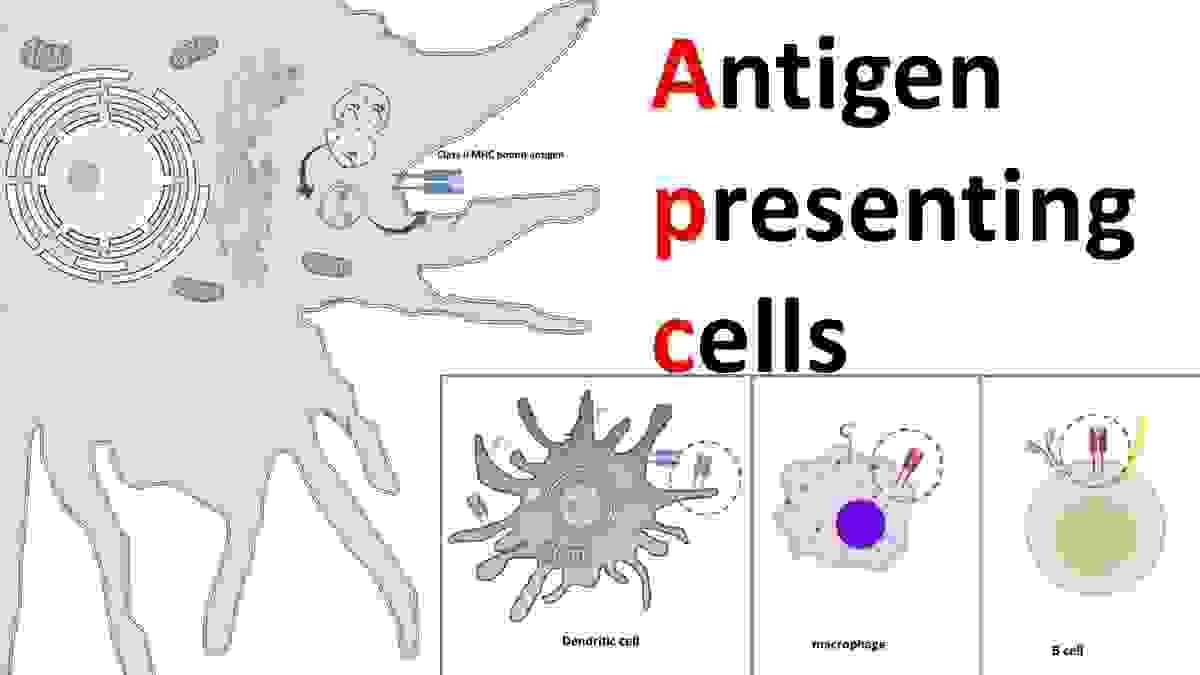
Antigen presenting cell (APC)
An antigen-presenting cell (APC) or accessory cell is a cell that displays an antigen bound by major histocompatibility complex (MHC) proteins on its surface; this process is known as antigen presentation. T cells may recognize these complexes using their T cell receptors (TCRs). APCs process antigens and present them to T cells.
Almost all cell types can present antigens in some way. They are found in a variety of tissue types. Dedicated antigen-presenting cells, including macrophages, B cells and dendritic cells, present foreign antigens to helper T cells, while virus-infected cells (or cancer cells) can present antigens originating inside the cell to cytotoxic T cells. In addition to the MHC family of proteins, antigen presentation relies on other specialized signaling molecules on the surfaces of both APCs and T cells.
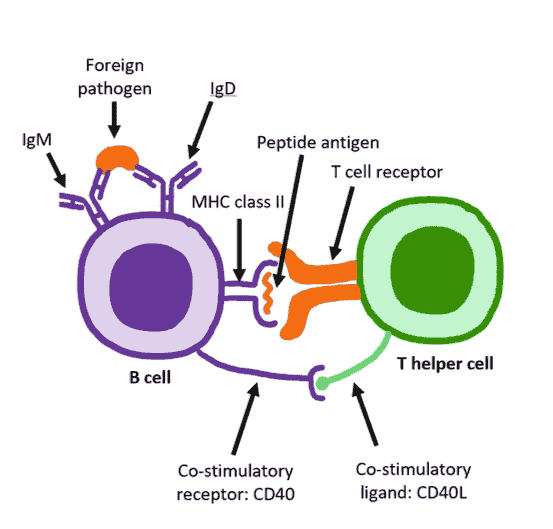
CD4 T cells
Human CD4+ T cells are critical regulators of the immune system, as drastically demonstrated by HIV-infected individuals that develop susceptibility to opportunistic infections and cancer when virus-dependent depletion reduces CD4+ T cell counts below critical thresholds. CD4+ T cells are very heterogeneous in human adults, because they have been generated in response to a high number of different pathogens and belong to a progressively increasing number of different subsets with specialized functions. Helper T cell subsets are defined by the production of cytokines and/or the expression of characteristic lineage-defining transcription factors. Five principal subsets or lineages of CD4+ T cells have been identified so far: T helper (Th)1, Th2, and Th17 cells that target specific classes of pathogens, regulatory T cells that are required to maintain self-tolerance and follicular helper T cells (TFH) that provide help to B cells for antibody production.
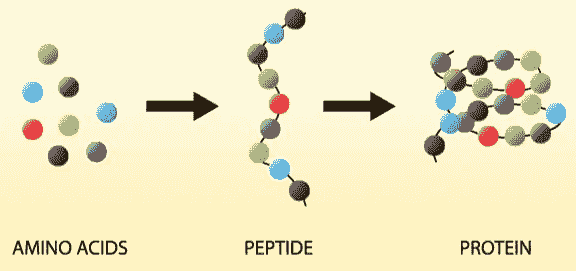
Peptide
Peptides are chains of amino acids (at least two). The acid monomers are connected through peptide linkages and are amongst the most effective known bioactive substances. Examples of such biologically active peptides are hormones, neurotransmitters, or growth factors. The biggest peptide includes up to 100 amino acids. More than 7’000 naturally occurring peptides are known. Longer peptides with three-dimensional shape are called proteins. Peptide synthesis is a chemical process, in contrast to biological substances like antibodies.

T cell receptor (TCR)
T cell receptors (TCRs) are specific receptors on the surface of T cells that can recognize and bind protein antigens, and are characteristic markers of all T cells. TCR specifically recognizes and binds to specific antigen peptides presented by the major histocompatibility complex (MHC) on the surface of antigen presenting cells (APC) to form TCR-antigen peptide-MHC complex (TCR-pMHC complex) , initiate the first transduction signal, thereby inducing the activation of T cells and exerting adaptive immune effector function.
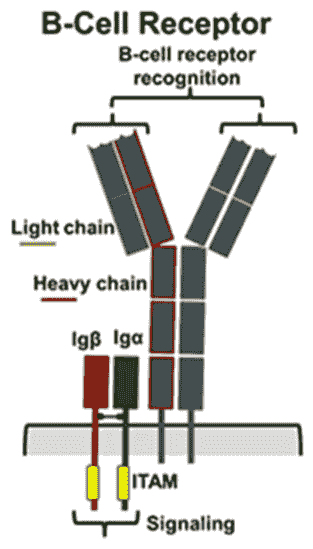
B cell receptor (BCR)
B cell receptor (BCR), also known as B cell antigen receptor, is usually a heterodimeric complex composed of an antigen-binding subunit (membrane surface immunoglobulin, mIg) and a signaling unit. The antigen-binding subunit is a tetramer composed of two heavy chains (H) and two light chains (L) (κ or λ chains), of which the H chain consists of four parts of gene fragments, including 65-100 types of variable regions (VH), 2 types of variable regions (DH), 6 types of binding regions (JH) and constant region (CH); L chain is composed of Three parts of gene fragments, involving variable region (VH), binding region (JH) and constant region (CH) composition. The signaling unit is a heterodimeric protein in which Ig-alpha (Igα, CD79A) and Ig-beta (Igβ, CD79B) are linked by disulfide bonds. The cytoplasmic domain of Ig-alpha is longer and contains 61 amino acids; the cytoplasmic domain of Ig-beta contains 48 amino acids.
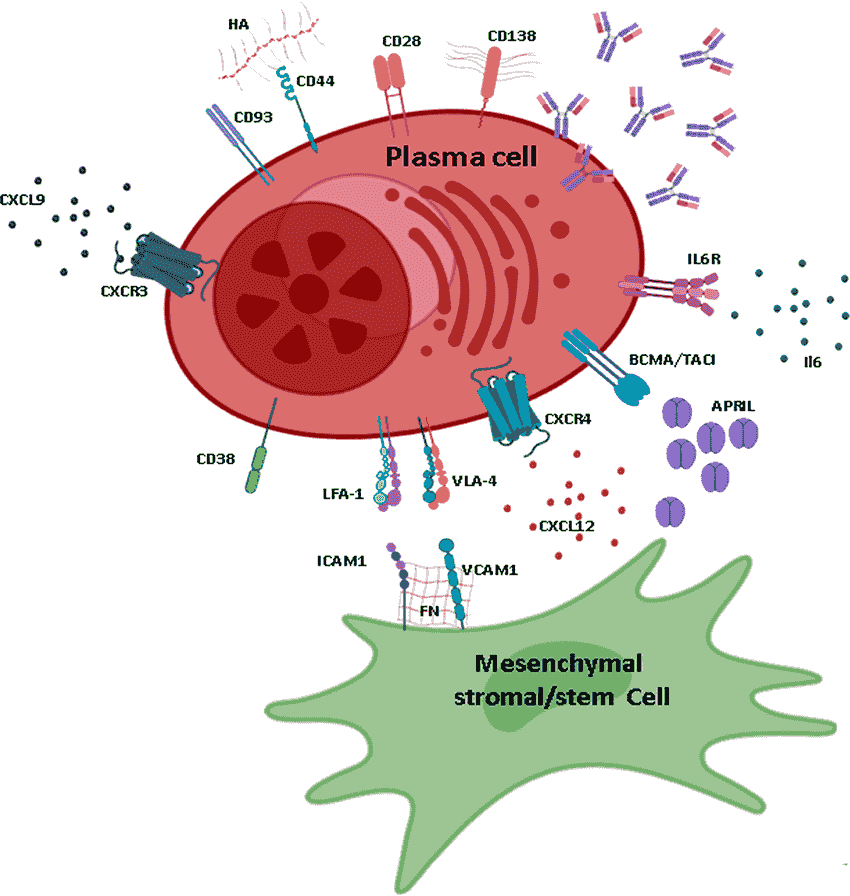
Plasma cell
Also known as plasma B cells, plasma cells are terminally differentiated B lymphocytes. While they originate from activated B cells in the spleen and lymph nodes (secondary lymphoid organs) etc., some plasma cells migrate to the bone marrow where they may persist for an extended period of time.
Here, it's suggested that they interact with the stromal cells that surround the sinusoidal endothelial cells which facilitates the production and release of antibodies into the blood stream.

T cell thymic development
T-cells originate from stem cells in the bone marrow and develop in the thymus, a small lymphoid organ located between the lungs. Once in the thymus, immature T cells progress through multiple developmental stages on their road to differentiation into mature T cells capable of recognizing antigens and protecting our bodies from infection. During this period of development, T cells undergo somatic recombination to generate individual T cell clones expressing unique TCRs. These TCRs are key molecules in the identity of each T cell, as they each have the ability to bind and recognize different antigens. In general, this antigen recognition process occurs when the TCR binds to antigen being presented by other cells on MHC proteins (MHC class I in the case of CD8+ T cells, MHC class II in the case of CD4+ T cells). For example, if one of your cells were to be infected by a virus, this infected cell could present viral antigens on its surface via MHC class I molecules, and this antigen-MHC complex would act as a danger signal to the surrounding immune cells. A T cell with a compatible TCR could then bind to the antigen-MHC complex on the infected cell and kill it, thereby preventing the spread of the virus. Given the important role of the TCR in facilitating antigen recognition and cellular killing, it is vitally important that the TCRs produced by somatic recombination 1) are capable of binding MHC complexes and 2) will not recognize our own cells, which also express MHC proteins bound to normal, self-peptides. T cells, then, must walk a very fine line between recognition of that which is foreign and harmful, and that which is self and safe.

Positive Selection
To address the necessity that T cells be capable of binding MHC complexes, T cells undergo positive selection. In this process, cells in the thymus present short pieces of proteins, called peptides, on their own MHC class I and class II molecules, allowing immature T cells to bind. If TCRs are incapable of binding, the T cell will undergo a type of cell death celled apoptosis. If, however, a T cell’s TCR successfully binds to the MHC complexes on the thymic cells, the T cell receives survival signals and is thus positively selected. Further, this positive selection process also determines if a T cell will become a CD8+ T cell or a CD4+ T cell. Specifically, if a TCR complex binds strongly to MHC class II, the complex will send intracellular signals to induce the expression of a protein called ThPOK. This protein reduces the expression of another key protein, called Runx3, responsible for driving CD8 expression. Because low Runx3 causes low CD8, these ThPOK+, Runx3- cells become CD4+. If, however, a developing T cell does not bind strongly to MHC class II, ThPOK levels will be low and thus Runx3 levels will be high, pushing the T cell to differentiate into a CD8+ cell. In sum, the process of positive selection leads to the survival of mature CD8+ and CD4+ T cells capable of recognizing MHC complexes.

Negative Selection
While the ability of T cells to recognizes antigen-MHC complex is vital for their ability to fight pathogens and other foreign cells, it is equally important that these T cells do not recognize and attack our own cells. This is where negative selection comes into play. As described above, developing T cells in the thymus are presented with peptides bound to MHC molecules, to which they may be able to bind. Importantly, while a moderate degree of binding leads to survival and positive selection, TCRs that bind too strongly to these MHC complexes are destined for the opposite fate (Figure 1, bottom). It is thought that, when TCRs bind too strongly to the MHC complexes in the thymus, the intracellular signaling is so strong that it actually leads to cell death, thereby eradicating immature T cell that have a high likelihood of being self-reactive and attacking our own cells.
One of the most intriguing aspects of negative selection is that it primarily occurs in the thymus, which means that T cells rely solely on the cells in the thymus to present self-peptides on MHC molecules. Because of this, it is tempting to think that negative selection will only delete T cells who show reactivity to thymic self-peptides… but what about peptide-MHC complexes specific to the stomach or the skin or the lungs? Would the T cells that survive negative selection leave the thymus only to kill cells of our other organs? Clearly, this is not the case, and the reason is attributed to a protein called autoimmune regulator, or AIRE. The role of AIRE in the thymus is to induce the expression of many proteins that are not typically expressed in thymic cells, such as proteins characteristic of the lungs. In this way, developing T cells are exposed to many peptide-MHC complexes, not just those normally expressed by thymic cells, thereby preventing autoimmunity once T cells leave the thymus.

Immune tolerance
Immune tolerance, also known as immunological tolerance or immunotolerance, refers to the immune system's state of unresponsiveness to substances or tissues that would otherwise trigger an immune response. It arises from prior exposure to a specific antigen and contrasts the immune system's conventional role in eliminating foreign antigens. Depending on the site of induction, tolerance is categorized as either central tolerance, occurring in the thymus and bone marrow, or peripheral tolerance, taking place in other tissues and lymph nodes. Although the mechanisms establishing central and peripheral tolerance differ, their outcomes are analogous, ensuring immune system modulation.
Immune tolerance is important for normal physiology and homeostasis. Central tolerance is crucial for enabling the immune system to differentiate between self and non-self antigens, thereby preventing autoimmunity. Peripheral tolerance plays a significant role in preventing excessive immune reactions to environmental agents, including allergens and gut microbiota. Deficiencies in either central or peripheral tolerance mechanisms can lead to autoimmune diseases, with conditions such as systemic lupus erythematosus, rheumatoid arthritis, type 1 diabetes, autoimmune polyendocrine syndrome type 1 (APS-1), and immunodysregulation polyendocrinopathy enteropathy X-linked syndrome (IPEX) as examples. Furthermore, disruptions in immune tolerance are implicated in the development of asthma, atopy, and inflammatory bowel disease.
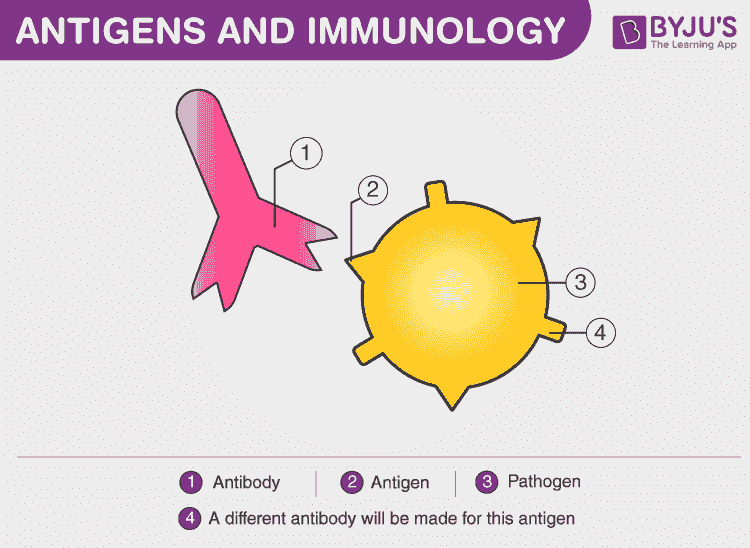
Antigen
Antigens are large molecules of proteins, present on the surface of the pathogen- such as bacteria, fungi viruses, and other foreign particles. When these harmful agents enter the body, it induces an immune response in the body for the production of antibodies.
The immune system has the capacity to distinguish between body cells (‘self’) and foreign materials (‘non-self’)
It will react to the presence of foreign materials with an immune response that eliminates the intruding material from the body
All nucleated cells of the body possess unique and distinctive surface molecules that identify it as self.
These self markers are called major histocompatibility complex molecules (MHC class I) and function as identification tags.
The immune system will not normally react to cells bearing these genetically determined markers (self-tolerance)
Any substance that is recognised as foreign and is capable of triggering an immune response is called an antigen (non self)
Antigens are recognised by lymphocytes which bind to and detect the characteristic shape of an exposed portion (epitope)
Lymphocytes trigger antibody production (adaptive immunity) which specifically bind to epitopes via complementary paratopes
Antigenic determinants include:
- Surface markers present on foreign bodies in the blood and tissue – inluding bacterial, fungal, viral and parasitic markers
- The self markers of cells from a different organism (this is why transplantation often results in graft rejection)
- Even proteins from food may be rejected unless they are first broken down into component parts by the digestive system
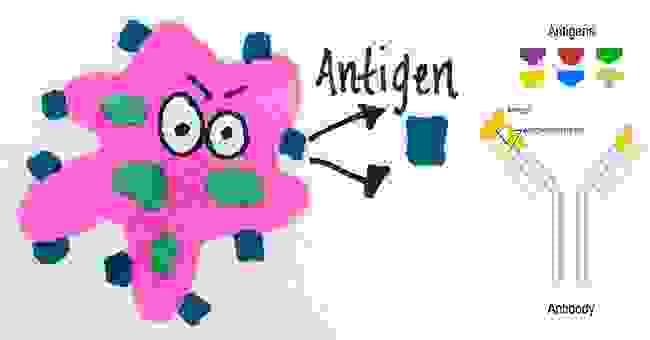
Properties of Antigens
- The antigen should be a foreign substance to induce an immune response.
- The antigens have a molecular mass of 14,000 to 6,00,000 Da.
- They are mainly proteins and polysaccharides.
- The more chemically complex they are, the more immunogenic they will be.
- Antigens are species-specific.
- The age influences the immunogenicity. Very young and very old people exhibit very low immunogenicity.
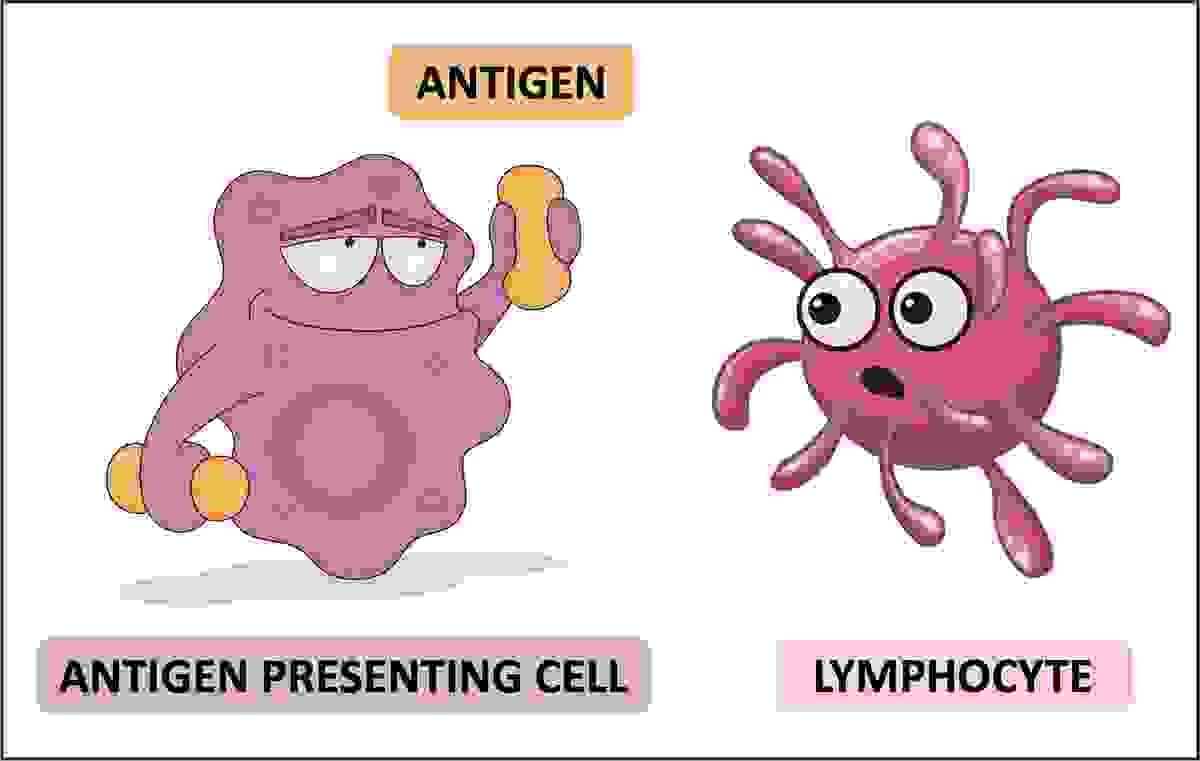
Types of Antigens
Exogenous Antigens
Exogenous antigens are the external antigens that enter the body from outside, e.g. inhalation, injection, etc. These include food allergen, pollen, aerosols, etc. and are the most common type of antigens.
Endogenous Antigens
Endogenous antigens are generated inside the body due to viral or bacterial infections or cellular metabolism.
Autoantigens
Autoantigens are the ‘self’ proteins or nucleic acids that due to some genetic or environmental alterations get attacked by their own immune system causing autoimmune diseases.
Tumour Antigens
It is an antigenic substance present on the surface of tumour cells that induces an immune response in the host, e.g. MHC-I and MHC-II. Many tumours develop a mechanism to evade the immune system of the body.
Native Antigens
An antigen that is not yet processed by an antigen-presenting cell is known as native antigens.
© 2025
























